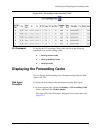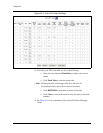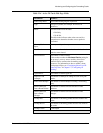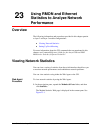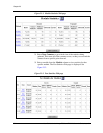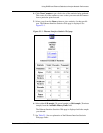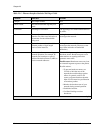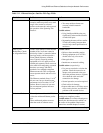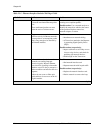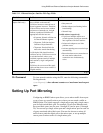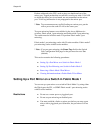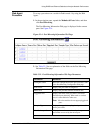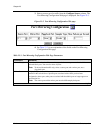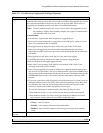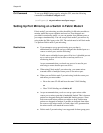
Document No. 10-300077, Issue 2 23-5
Using RMON and Ethernet Statistics to Analyze Network Performance
Multicasts Normal during network operation. For
example, multicast packets are to send
target video streams to selected
stations on the network, and are part of
the operation of the Spanning Tree
Protocol.
Possible causes:
• Too many multicast frames can
consume valuable network
bandwidth.
Possible actions:
• Using Intelligent Multicasting can
significantly reduce multicast traffic
on individual ports.
• Segmenting the network into smaller
VLANs and routing between them
can also help control proliferation of
multicasts.
CRC (Cyclic
Redundancy Check)
or Alignment Errors
Counts of the number of times that the
number of bits in a frame cannot be
divided by 8 (that is, cannot be broken
into legal octets), and that contain a
Frame Check Sequence validation
error. Typically caused by turning
equipment on or off, and by noise on
twisted pair segments. These errors can
also result from configuring a network
that does not comply with 802.3
standards. In a standards-compliant
Ethernet network, CRC or alignment
errors represent transit and receive bit
errors.
The Ethernet standard allows 1 in 10
8
bit error rate, but you should expect
performance to be less than 1 in 10
12
packets. Rates in excess of one error
per one thousand packets indicate a
serious problem.
Possible causes:
• Defect at the transmitting station.
• Turning equipment on or off. This
should cause only a few errors.
• Damaged cables.
• Interference on network cabling.
Possible actions (respectively):
• Use port error statistics to isolate the
problem. Check the transceiver or
adapter card connected to the port
where the problem seems to originate.
Also check the cable and cable
connections for damage.
• Normal operation, no action required.
• Check cables for damage.
• Inspect cable runs to see if they are too
close to noisy devices, and check for
problems with network devices.
Undersized Packets Count of packets with a valid CRC that
violate the minimum Ethernet packet
size.
These malformed packets are most
often the result of software errors.
Possible cause: Device or application
creating non-compliant packets.
Possible action: Use a network analyzer to
identify the which transceiver which is at
the source of the problem. Replace the
transceiver, network adapter, or station.
Table 23-1. Ethernet Interface Statistics Web Page Fields
Statistic Indicates Actions
2 of 4



